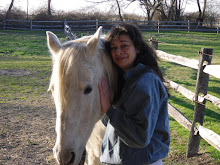RIVER SONG
Powell Expedition
Realized the relationship between the Grand Canyon walls and the river: smoother walls=quieter water; rougher walls=rougher water.
Found the ruins of a house which was abandoned 700 years ago.
His expedition provided the basis for current knowledge of the canyon.
Grand Canyon
Glenn Canyon Dam created a new environment and controls the flow of the water.
There are “river waves” which look spectacular.
The walls were pushed above sea level 1 ¼ billion years ago.
EARTH HISTORY RESOURCE BOOK
Expedition Members
J.C. Sumner
William H. Dunn
W.H. Powell
G.Y. Bradley
O.G. Howland
Seneca Howland
Frank Goodman
W.R. Hawkins
Andrew Hall
John Wesley Powell
Food Taken on Trip
Flour, sugar, coffee, beans, bacon and other food. 10 months worth of rations. Hope to add fresh meat and fish along the way.
Equipment Taken on Trip
Axe, hammer, saw, auger, other tools, ammunition, traps, nails, screws, sextants, chronometers, barometers, thermometers, compasses, other instruments.
Supplies I Would Take
Soap, food, fishing gear, cell phone, compass, flashlight, mirror, tent, sleeping bag.
Type of person Powell was
John Wesley Powell was a man who had a strong and determined personality. He set his goals and would not stop without achieving them. This is shown in his determination to explore the Colorado River. He climbed rock walls that were a challenge for any man. He also had a gentle side that he did not expose to people. This is demonstrated in his writings of the Grand Canyon.
CD ROM
How did the contributions of John Wesley Powell expand the field of scientific knowledge? How did these past scientific contributions influence current scientific understanding?
I don’t believe the slide show addresses these two questions. I then read it in the Teacher’s Guide and still could not find the answer. What I interpret as the correct response is as follows. Powell’s identified rock layers that would not make normally form in that area unless it was submerged under the sea. Also, the distinct layering of rock shows the millions of years it took to form the land. The process of erosion exposed these to scientists rather than keeping it buried in the Earth.
Subscribe to:
Post Comments (Atom)

No comments:
Post a Comment